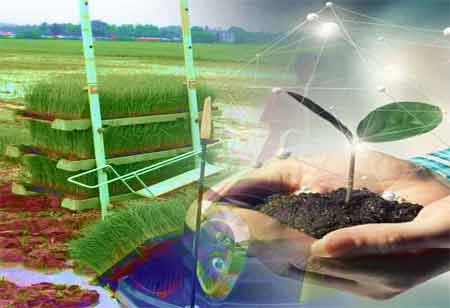Thank you for Subscribing to Agri Business Review Weekly Brief
Vertical Farming to Provide Food for the Future Population
Climate change and population growth have a negative impact on our basic needs for food and agriculture.

By
Agri Business Review | Tuesday, February 21, 2023
Stay ahead of the industry with exclusive feature stories on the top companies, expert insights and the latest news delivered straight to your inbox. Subscribe today.
The use of vertical farming systems enables urban agriculture and increases food safety and accessibility.
FREMONT, CA: Climate change and population growth have a negative impact on our basic needs for food and agriculture. In addition to food insecurity, logistics, and various economic factors, urban farm expansion is also heavily influenced by food insecurity. Given the area covered by traditional farming techniques, it is nearly impossible to incorporate them into the metropolitan area. Moreover, the climate change we are experiencing has rendered a significant portion of the land unproductive. Thus, vertical farming, which emerged due to the search for alternative farming techniques at a time when the viability of traditional agricultural soil is in jeopardy, is still being optimized.
Vertical farming systems permit the implementation of agriculture in urban areas, allowing for more compact food production that increases food safety and accessibility. It makes soilless agriculture possible by developing various technological systems. These stacked systems, including green towers and greenhouses, are adaptable indoors and outdoors.
Vertical farms are advantageous urban systems. Although efforts have been made to optimize them for some time, building-scale examples still need to be built. However, it is becoming more prevalent on small greenhouse scales, indoors, in various market and commercial areas, and residential areas. Numerous architects are working on intricately detailed vertical farming projects. Although the number of those implemented is low, it is possible to reach many vertical farming structures that have been meticulously designed. It is also possible to encounter the term "Agritecture" with this approach, which combines agriculture and architecture.
Soilless farming; hydroponics, aquaponics, and aeroponics
Vertical farming is a technological greenhouse system that creates a suitable environment for each plant to increase yield while reducing water and soil consumption. In this closed system, each plant is provided with optimal nutrients and light, eliminating the need for toxic herbicides and pesticides and ensuring dependable food production.
Plants are grown without soil using nutrient-rich water in hydroponics. Although water is necessary for this system, it requires less water than conventional farming techniques, making it more sustainable and cost-effective. Additionally, LED lighting enables farmers to cultivate crops year-round in any climate, providing consumers with a consistent supply of fresh produce.
Typically, plants are positioned in a growing medium. Beginning the process is an air pump that oxygenates the nutrient-rich water solution. First, water is pumped to the highest row of plants, and then gravity facilitates the water's flow to the subsequent rows. After releasing the water, it percolates through the soil and contacts plant roots. These roots absorb the water's essential nutrients, nourishing the plant's growth. The water is then returned to the tank for reuse.
In general, the operation is similar across all three systems. The water used in aquaponics is nourished by fish in a pond, while the fish are nourished by the nutrients in the recirculated water, resulting in mutual benefit. In hydroponics, water reaches the roots as it flows, whereas, in aeroponics, the water is sprayed directly onto the roots.
On numerous farms, all three systems are widespread. Despite operating as a soilless and water-dependent system, it has lower resource requirements than conventional agriculture.
Agritecture: agriculture+architecture
However, large-scale architectural examples of vertical farming are still relatively rare. These farms, typically created on a greenhouse scale, began to spread to various locations, including homes. Nonetheless, some inspiring architectural projects have been built or will be made in this regard. In these projects, it is possible to visualize how these vertical farms, intended to become widespread in cities, will appear and how they can be integrated into human life.
Indoor vertical farms: can they feed the world?
Vertical farming provides a unique solution to the problem of feeding a growing population, although more than the output of these farms would be needed to feed everyone. The traditional and indoor growing industries must continue to work together to create a sustainable, resilient food system.





